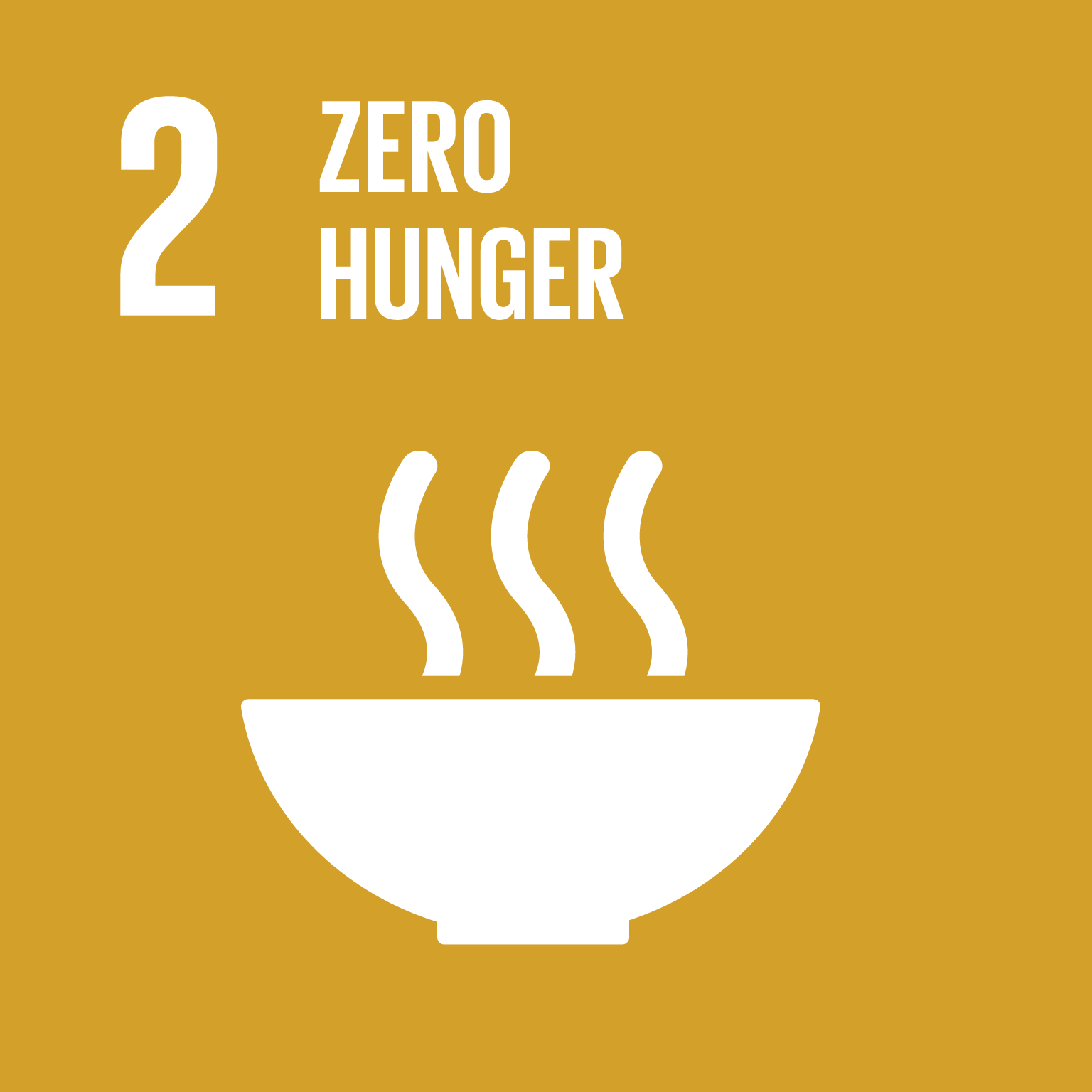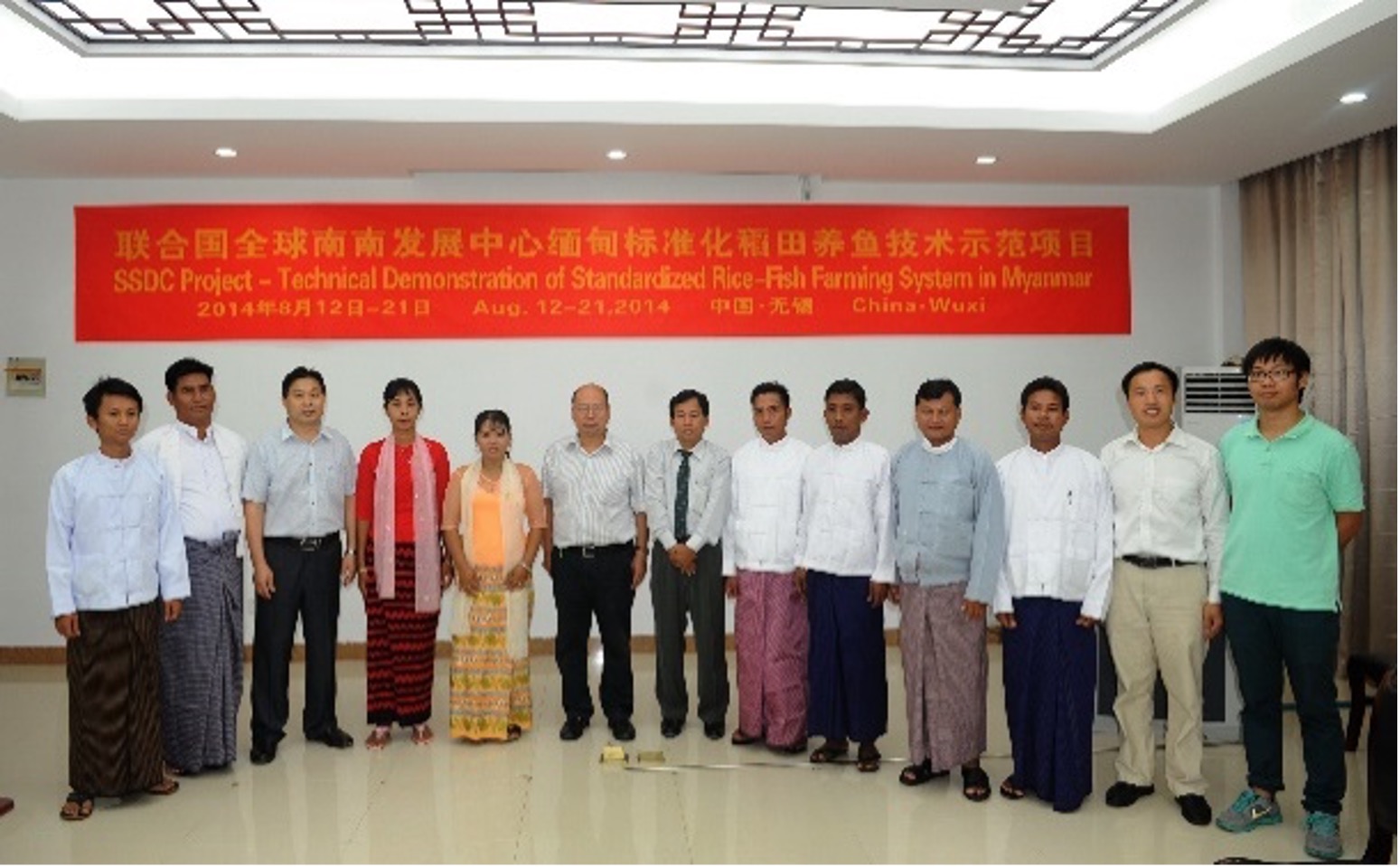 Technical Demonstrations of a Standardized Rice-fish Farming System in Myanmar
Increasing fish output and farmers’ income from the selected rice field
Technical Demonstrations of a Standardized Rice-fish Farming System in Myanmar
Increasing fish output and farmers’ income from the selected rice field

Challenges
Aquaculture in rice-based farming systems plays an important role in food security and poverty alleviation. Myanmar has extensive rice field resources, and rice-fish culture has been practised in the country since the mid-1990s. The government observed that aquatic production, in addition to the rice crop, was a critically important product for rural livelihoods. However, despite the vast available resources that can be utilized for rice-fish farming in Myanmar, this industry has not been highly successful. Its development has progressed at a slow rate, mainly due to several major constraints, e.g., lack of skilled technicians for selecting optimized fish species; lower farming management expertise; poor design of rice fish farming facilities; insufficient qualified technicians in rice-fish culture; insufficient fish seed supplies; and a lack of funds for rice-fish farming and other related projects.
Towards a Solution
To address the above challenges, the China South-South Development Centre, together with the Freshwater Fisheries Research Centre of the Chinese Academy of Fishery Sciences (FFRC) and the Department of Fisheries, Ministry of Livestock, Fisheries and Rural Development (DoF/MLFRD), carried out technical demonstrations of a standardized rice-fish farming system in Myanmar. This can help increase farmers’ income and fish supply, promote rice-fish industry development and create more job opportunities in Myanmar, which are closely in line with Sustainable Development Goal (SDG) 1 (No poverty), SDG 2 (Zero hunger) and SDG 8 (Decent work and economic growth). It can also help prevent overfishing by providing an alternative option in the fishing sector, which helps to achieve SDG 14 (Life below water). Through the active participation of various fishery institutions, enterprises and farmers, it helps to achieve SDG 17 (Partnerships for the goals). In the Istanbul Programme of Action, the project addresses Priority 1 (productive capacity infrastructure, energy, science, technology and innovation, private sector development), Priority 2 (agriculture, food security and rural development); Priority 5 (Human and social development) and Priority 7 (capacity-building).
A total of eight Chinese experts in two groups from FFRC were dispatched to conduct two ten-day technical missions in Myanmar to advise on rice-fish farming. They helped in selecting farmers in the standardized restructuring of paddy fields and in the improvement of farming techniques and management skills. Classroom lectures, laboratory works and technical consultations were combined to help farmers acquire the basic theory and practical techniques of a standardized rice-fish system. Moreover, nine technical officers, programme managers and farmers from Myanmar were invited to China for a ten-day study tour and training on rice-fish farming. They became the key persons in assisting the demonstration project and in following the expansion of the innovative culture model.
This project helped establish two technical demonstration farms as a standardized rice-fish farming system in Yangon and Naypyitaw, focusing on making a valuable contribution to building the capacity of rice-fish farming technicians and officers from the DoF/MLFRD. It ultimately contributed to attracting more people to engage in this kind of enterprise, promoting the development of rice-fish farming, and improving household food and nutritional security in the country.
Throughout the project, the FFRC team focused on five aspects:
- increasing understanding of the rice-fish production system;
- conducting training for technical staff of DoF/MLFRD on rice-fish farming technology, including the design of the rice-fish farming system, stocking of recommended species, feeding technology, etc.;
- providing technical consultation on rice-fish farming system design, disease prevention, feeding management and paddy field management to help technicians and farmers better manage farms and improve the productivity of the rice-fish farming system;
- facilitating Chinese fishery institutions and enterprises to cooperate with local fishery institutions for the improvement of fishery facilities;
- sharing with participants more funding channels for developing the rice-fish farming industry.
In addition, in order to ensure sustainability and leadership of the project, a National Programme Officer (NPO) was appointed. The NPO was in charge of carrying out a series of coordination, consultancy and liaison activities, under the overall supervision of the China South-South Development Centre Project and FFRC in China, and the Myanmar Department of Fisheries. Around 40 technical staff and local farmers under DoF/MLFRD were the target beneficiaries of this project. In 2016, the mission team examined a demonstration farm, which was redesigned in 2015. Among other species, the Yangon demonstration site stocked summerlings in 1.6 ha of paddy fields. After feeding for four months without reducing the rice yield, an additional harvest of 160 kg of large-sized fingerlings was obtained, for a value of over USD 120. The demonstration site of 0.8 ha in Naypyidaw was even more effective. An integrated farming model was adopted. Banana trees, tomatoes, peppers and other vegetables were planted on the field ridges. The rice yield increased by more than 60 per cent at the end of the year. The average size of the stocked fingerlings exceeded 15 cm each, and total output exceeded 260 kg. FFRC experts have been actively committed to improving the economy of the rice and fishery industry in Myanmar, and specifically helping the people of Myanmar to increase their income from rice fields and enrich the supply of aquatic products. Great interest was raised among many more of the local farmers.
This project taught the concept of ”single land with a double income” to rice farmers in Myanmar. Through the project, the beneficiaries are not only able to obtain income from the rice crops, but can also earn more from the additional fish products from the same land. The successful stories of beneficiaries attracted more rice farmers in Myanmar to engage in this industry, which is good example of poverty reduction for less developed countries. And, due to the very rich resources of paddy fields and waters, Association of South-East Asian Nations (ASEAN) countries, including Myanmar, have great potential for rice-fish industry development. Moreover, the project encourages the full integration of women and the promotion of gender equality at all stages of rice-fish industry chain in Myanmar. The report on rice-fish industry development in Myanmar was drafted, providing a helpful reference for those who expect to cooperate with various stakeholders in agriculture in Myanmar.
Contact Information
Countries involved
Supported by
Implementing Entities
Project Status
Project Period
URL of the practice
Primary SDG
Primary SDG Targets
Secondary SDGs
Secondary SDG Targets
Similar Solutions
| NAME OF SOLUTION | Countries | SDG | Project Status | |
|---|---|---|---|---|
A Billion Brains: Smarter Children, Healthier Economies High Level Meeting on South-South Cooperation for Child Rights |
China, Myanmar | 17 - Partnerships for the Goals | Completed | View Details |
Accelerating the Implementation of African Union Treaties in São Tomé and Príncipe South-South learning from the Beninese judicial system’s experience in the application of human rights treaties to its national law |
China, Myanmar | 05 - Gender Equality | Completed | View Details |
Accelerating the Transformational Shift to a Low-Carbon Economy in Mauritius Towards supplying 35 percent of the country’s energy needs with renewables by 2025 |
China, Myanmar | 05 - Gender Equality 09 - Industry, Innovation and Infrastructure 13 - Climate Action | Ongoing | View Details |
Accelerator Labs Network Following collective intelligence methods to address emerging sustainability challenges and the growing demand for local solutions |
China, Myanmar | 08 - Decent Work and Economic Growth 13 - Climate Action | Ongoing | View Details |
Accessibility of Financial Services and the Private Sector in Africa Maximizing the impact of financial cooperation on economic development and industrialization in Africa |
China, Myanmar | 08 - Decent Work and Economic Growth | Completed | View Details |
